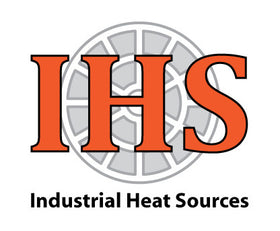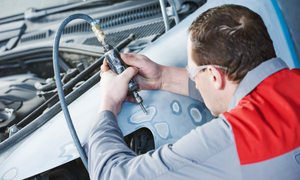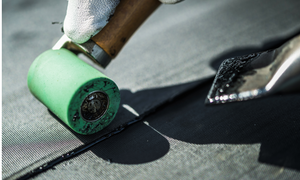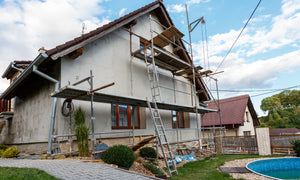Top 6 Civil Engineering Applications for Plastic Welding

When it comes to civil engineering, plastic welding has emerged as a game-changer, offering cost-effective solutions, and enhancing the durability of structures. Below, we explore the top applications of plastic welding associated with the following civil engineering disciplines.
- Construction engineering
- Environmental engineering
- Geospatial engineering
- Geotechnical engineering
- Structural engineering
- Transportation engineering
- Water resource engineering
1. Container and Pipeline Engineering
One of the primary applications of plastic welding in civil engineering is in pipeline engineering, including construction, thawing, and repair. Thermoplastic materials such as high-density polyethylene (HDPE) and polyvinyl chloride (PVC) are commonly used in pipelines for water distribution, sewerage systems, and gas transportation.Plastic welding is instrumental in installing and sealing HDPE and PVC geomembranes, ensuring impermeability, and preventing hazardous substances from leaking into the soil or groundwater. Techniques like wedge welding and extrusion welding allow for precise seam formation, creating a robust barrier against seepage and contamination. Civil engineers rely on plastic welding to construct reliable containment structures that comply with environmental regulations and safeguard public health.
HDPE containers are widely used for storing and distributing various liquids. They are manufactured using an injection molding method in which HDPE is melted, and the molten plastic is injected into a mold or form to create the desired shape. Thermoplastic welding methods are used to construct the container and plumbing systems. In some cases, HDPE containers are a more cost-effective and safer alternative to existing tank systems, such as stainless-steel containers or concrete containers. Corrosion and leakage problems associated with these types of systems have led to an increased use of HDPE container systems.
HDPE and PVC liners are commonly used in storage tank containment systems. They are a viable solution when resistance to ultraviolet (UV) radiation, ozone, and chemical resistance is needed. They are also flexible, resistant to corrosion, and provide increased protection against punctures and leakage.
HDPE pipes and fittings are manufactured using a plastic extrusion process. Molten plastic is extruded into a mold or die to form pipes and fittings. Once the molding process is complete, the pipes and fittings possess a high strength-to-density ratio, which gives them excellent impact and pressure resistance. They can also withstand the damaging effects of UV radiation exposure and internal corrosion.
Storage and transportation of HDPE piping systems are also easier and more cost-effective than heavy concrete and steel piping systems. They are lightweight and have a good bend radius, which helps to overcome the difficulties associated with installing miles or kilometers of heavy, rigid pipe systems.
Applications
- Water supply mainlines (potable water systems)
- Sewer & drainage systems
- Gas supply systems
- Irrigation systems
- Ventilation systems
- Recirculation systems
- Flow control systems
- Power, telecommunication, and fiber optic cable enclosures
- PVC-U, or unplasticized PVC, means that there is no plasticizer added to the PVC compound. It can withstand the damaging effects of UV radiation, as well as internal corrosion. It is commonly used in the distribution of potable (drinking) water. It can be used in waste/sewage systems and underground drainage systems, as well. It is durable and resistant to both corrosion and impact.
- PVC-C, chlorinated PVC, means that it has a higher chlorine content than PVC-U piping. Like PVC-U, chlorinated PVC can withstand the damaging effects of UV radiation and internal corrosion. It can also be used for the distribution of potable (drinking) water, waste/sewage systems, and underground drainage systems. PVC-C can withstand a wider range of temperatures and is more flexible than PVC-U piping. Therefore, it can be used in underground non-potable water applications such as irrigation and sewer pumping systems.
Applications
- Water supply systems (potable water systems)
- Sewer & drainage systems
- Irrigation systems
- Stormwater systems
- Recirculation systems
- Flow control systems
- Power, telecommunication, and fiber optic cable enclosures
Tools to Use
- Munsch MAX-18 Handheld Extrusion Welder
- HSK EasyWeld 110 Butt Welder
- Munsch Rob-Extruder
- Munsch Mini MM-E Handheld Extrusion Welder
- HSK-IE60 Industrial Mounted Extruder
>>Related read: 5 Expert Plastic Welding Techniques and How to Master Them
2. Geomembrane Installation
Geomembranes are synthetic materials typically made of thermoplastic polymers, such as high-density polyethylene (HDPE), low-density polyethylene (LDPE), polyvinyl chloride (PVC), and other flexible materials. They play a vital role in environmental protection and containment systems, such as landfill liners, pond liners, and reservoirs.
Techniques like wedge welding and extrusion welding allow for precise seam formation, creating a robust barrier against seepage and contamination. Civil engineers rely on plastic welding to construct reliable containment structures that comply with environmental regulations and safeguard public health.
Applications
- Containment covers and caps are used to contain odors, control moisture absorption, and reduce gas emissions from landfill sites.
- Dam and canal systems ensure freshwater containment for dams, canals, and reservoirs.
- Waterproofing systems protect the structural integrity of tunnels and underground structures against corrosion and degradation.
- Detention basins control stormwater flow and protect against soil erosion.
- Landfill liner systems prevent liquid waste (leachate) from contaminating soil and groundwater.
- Pond liner systems are used to prevent soil erosion and seepage (wastewater treatment ponds, agricultural ponds, decorative ponds, etc.).
- Erosion control systems such as slope stabilization and retaining walls are used to prevent the erosion of soil and landslides.
- Secondary containment systems prevent leakage of hazardous materials into soil and groundwater.
Tools to Use
- Munsch Geomembrane Sheet Puller
- Munsch Coupon Cutter
- IHS Type 1600 Hot Air Tool
- Munsch Wedge-It-Micro Wedge Welding Machine
>>Related read: Top 6 High-Performance Hot Air Tools for Roofing, Construction, and Civil Engineering Contractors
3. Roofing and Waterproofing
Plastic welding is used extensively in roofing and structural waterproofing applications, where thermoplastic membranes are employed as protective layers. Whether it's flat roofs, green roofs, or underground structures, plastic welding ensures seamless integration of waterproof membranes, effectively sealing vulnerable areas against water ingress. By utilizing techniques like hot air welding and solvent welding, structural engineers achieve durable and watertight seals that enhance the longevity of buildings and infrastructure.
In building construction, waterproofing is crucial for protecting structures from water infiltration and moisture damage. A roof membrane is a flexible or semi-flexible covering material that primarily waterproofs roofs, skylight installations, rooftop air conditioning systems, and freshwater storage systems. It can be made of a single material or several coated materials together. While membrane materials can sometimes be used for residential roofing applications, they are primarily used for commercial or industrial buildings with flat or low-slope roofs.
A thermoplastic roof membrane is made from synthetic polymers that become soft and pliable when heated and become firm yet flexible when cooled. They are also tear-resistant and lightweight. Thus, thermoplastic roof membranes have become a welcome alternative to traditional built-up roofing because they can be installed in one layer instead of multiple layers. The two most common types of thermoplastic roof membranes are polyvinyl chloride (PVC) and thermoplastic polyolefin (TPO).
- PVC membranes are laid down in overlapping sheets. The seams are welded together with a hot air hand tool fitted with an overlap welding nozzle or with an automatic overlap welding machine to ensure a watertight seal.
- TPO membranes are laid down in overlapping sheets. They are joined to the roof using a bonding adhesive for fully adhered systems or with plates and fasteners for a mechanically fastened roof system. Like PVC roof systems, fully adhered and mechanically fastened TPO roof systems can be welded together with a hot air hand tool fitted with an overlap nozzle or with an automatic overlap welding machine to ensure a watertight seal.
PVC and TPO membranes are highly resistant to chemicals, fire, and grease. They are also energy efficient, UV resistant, and recyclable. With proper maintenance, they can last up to 20 years or longer.
Tools to Use
- Steinel MH5 Roofing Rechargeable Welding Kit
- Forsthoff P2 Automatic Roof Welding Machine
- Everhard Stand-Up Membrane Slitter
- IHS Knife & Seam Probe Kit
>>Related read: How to Execute the 4 Most Common Types of Plastic Welds
4. Structural Component Fabrication
Plastic welding is often used for fabricating custom structural components in civil engineering projects. Thermoplastics offer versatility in shape and form, allowing engineers to create complex geometries tailored to specific design requirements.
Whether it's fabricating retaining walls, heavy-duty tarpaulins, barriers, or modular elements, plastic welding techniques like hot plate welding and ultrasonic welding enable the assembly of durable and lightweight structures. This flexibility in fabrication empowers civil engineers to innovate and optimize designs for enhanced performance and efficiency.
The building and construction industry uses a variety of building materials such as metals, glass, wood, and masonry. However, plastic materials are becoming increasingly important due to their high strength, low density, and lightweight characteristics. Construction applications include assembly of pipes and gutters, framing of window and door profiles, rooftop structures (storage & utility rooms), fabrication of flooring and building panels, as well as additives in a variety of polymer concretes.
Building specifications and requirements will determine what type of thermoplastic component should be used for a particular application. Some factors to consider when choosing a type of thermoplastic component include its strength and durability, weather resistance, chemical resistance, flexibility, and cost.
- Polyvinyl chloride (PVC) is one of the most versatile and widely used thermoplastics in the construction industry. It is known for its durability, weather resistance, and low cost. PVC components are used in a wide range of applications, including plumbing and drainage pipes, siding and window frames, electrical insulation, and flooring.
- Acrylonitrile butadiene styrene (ABS) is a strong and durable thermoplastic that’s also resistant to chemicals and corrosion. ABS components are used in a variety of applications, including drain and waste fittings, vent pipes, roof vents, gutters and downspouts, door frames, and casings.
- High-impact polystyrene (HIPS) is a lightweight and durable thermoplastic known for its good impact resistance and formability. HIPS components are used in various applications, including siding and window trim, soffits and fascia, door and window profiles, decorative molding, and gutters.
- Polycarbonate (PC) is a strong, transparent thermoplastic that is both impact and weather resistant. Polycarbonate components are used in a variety of applications, including skylights and greenhouses, window glazing, sound barriers, and safety guards.
- Polyethylene (PE) is known for being lightweight, flexible, and chemical resistant. Polyethylene components are used in many applications, including vapor barriers, geomembranes, irrigation pipes, and electrical insulation.
- Polypropylene (PP) is a lightweight and durable thermoplastic that is also resistant to chemicals and moisture. Polypropylene components are used in a variety of applications, including drainage pipes, plumbing fittings, vents and ducts, electrical insulation, and flooring.
Tools to Use
- Forsthoff Mini Electronic Speed Welding Kit
- Steinel HG 2320 ESD Hot Air Tool
- Steinel HG 2620E 230V/2300W Hot Air Tool
- Ritmo Stargun Uno Handheld Extruder
- HSK 120V Handheld Wedge Welder
- Sonics X-Press XPE & XPT Ultrasonic Welding Machine
>>Related read: The 5 Most Common Types of Plastic Welding Joints
5. Landfill Engineering
Landfills are engineered facilities, which are used for solid waste disposal. They require robust containment systems to prevent environmental contamination and protect public health. Plastic welding plays a crucial role in landfill infrastructure construction and maintenance, particularly for installing geomembrane liners and sealing seams.
By utilizing the correct method of welding such as wedge welding and extrusion welding, civil engineers can create impermeable barriers that effectively contain waste and prevent leachate migration into the surrounding soil and groundwater. Additionally, plastic welding tools can repair damaged liners and be used to install gas collection systems, contributing to the safe and sustainable operation of landfill facilities.
When welded properly, geomembranes have a high degree of tensile strength. Careful selection of the material and welding method is important to ensure the liner will remain durable and waterproof. Poorly welded geomembranes will compromise the overall effectiveness of the system. This results in long-term leakage, shrinkage, and mechanical damage to the geomembrane liner. Because of this, it is crucial to use reliable thermoplastic welding equipment to create consistent, seamless welds. It will not only help avoid costly repairs in the future but also extend the service life of the liner system.
Tools to Use
- Ritmo Sphera Flow-Line Hot Air Tool
- Munsch GMAK-420-D Handheld Extrusion Welder
- Munsch MAX-32-D Handheld Extrusion Welder
- Munsch Wedge-It-MULTI Wedge Welding Machine
>>Related read: Top 6 Environmental Benefits of Thermoplastic Welding in Manufacturing
6. Aquaculture Infrastructure
Plastic welding is integral for constructing aquaculture facilities, including fish tanks, floating cages, and water management systems. By creating watertight seals and durable structures, plastic welding helps maintain optimal conditions for aquaculture operations while ensuring the integrity of containment systems.
Storage tanks are commonly used for water holding tanks and recirculating systems in aquaculture infrastructure systems. They can be free-standing or stationary systems and are available in a wide variety of shapes and sizes. They are equipped with plumbing networks for water aeration, filtration, and pump systems. In many cases, it is necessary to fabricate and repair custom tanks, pipes, and pipe fittings. They can be easily fabricated using thermoplastic welding methods, such as hot air handheld speed welding and handheld extrusion welding.
High-density polyethylene (HDPE) liners are commonly used fishpond liner systems. They are durable, impermeable, and have a long service life. They can withstand harsh environmental conditions such as UV radiation, extreme temperatures, and the natural wear and tear associated with aquaculture operations. They can be custom designed to fit any size or shape of the pond. Moreover, HDPE liner systems provide a safe waterproof barrier that protects fish from harmful substances that may be found in ground soil deposits. They are commonly installed and repaired using thermoplastic welding equipment, such as hot air handheld overlap and handheld extrusion tools, or handheld and automatic wedge welding machines.
Tools to Use
- Forsthoff Hot Air-SE Tool
- Ritmo Stargun K-SB Handheld Extruder
- Munsch Wedge IT Plus (Dual Voltage) Wedge Welding Machine
- Munsch Mini (MM) Handheld Extrusion Welder
>>Related read: 10 Tips for Successfully Welding Plastics
Improve Efficiency and Save Costs on Your Civil Engineering Projects Today
There’s no doubt: Plastic welding has emerged as a valuable tool in the arsenal of civil engineers, revolutionizing the way we design, construct, and maintain infrastructure. From pipeline installations to structural rehabilitation, the applications of plastic welding are diverse and impactful.
To find the right plastic welding tools for your civil engineering project, call or email our team and we can provide you with cost-saving guidance and support.
- Robert Heater







